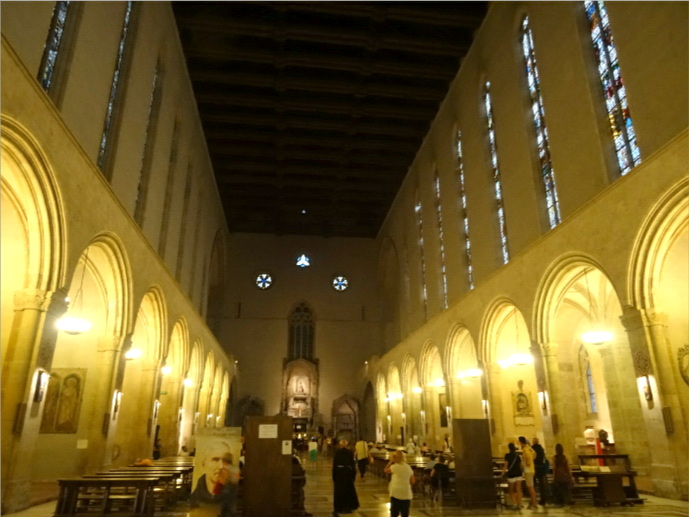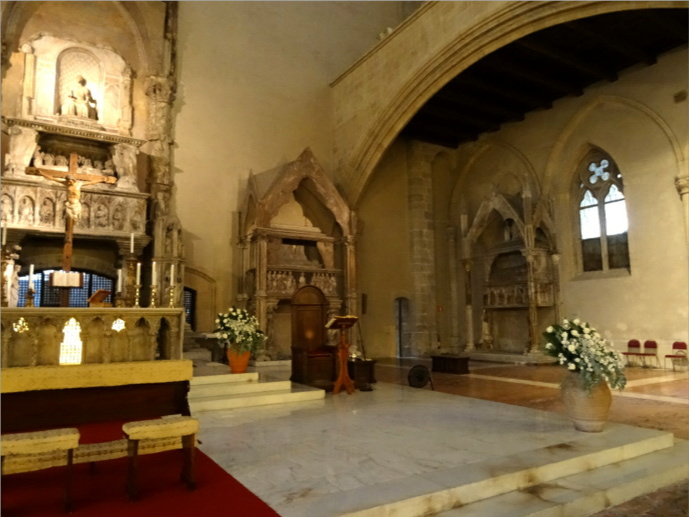Built between 1310 and 1328 the Santa Chiara is a religious complex that includes the Church of Santa Chiara; a monastery which is a community of the Grey Friars; and a convent of the Poor Clares; tombs and an archaeological museum. It also contains a belfry that stands within the grounds at the northeast corner. The complex is surrounded by a citadel-like wall separating it from the outside world.
Located diagonally across from the Church of Gesł Nuovo (See above) the Santa Chiara was constructed in the Gothic style of architecture, it was expanded in the 18th century in the Baroque style. During World War II it was almost entirely destroyed by fire following an air raid but was rebuilt in 1953 in its original Gothic style.
Built in 1313-1340 by Queen Sancha of Majorca and her husband King Robert of Anjou who are buried in the complex as are a number of the Kings and Queens.
Consisting of a large rectangular building 110.5 metres long by 33 metres wide. The nave is 47.5 metres tall and stretches for 82 metres in length. It include nine chapels located either side of the nave. These contain vaulted ceilings which supports a gallery running the whole length of the nave below the clerestory. The integration of the chapels and the fact that the church does not have an apse gives it its distinctive rectangular appearance.
After the chapels there is a section in the centre which contains the high altar. This is flanked by the rectangular friar's choirs on either side. Behind the altar is a wall separating the main body of the church from the nuns' choir. This contains three grill screens which allow the nuns to observe the mass, while preventing anyone in the nave from seeing them, something that was to be a first for the Clarissan order of Churches.
The tomb of King Robert of Anjou is located behind the main altar before the screens of the nuns. Other tombs are placed in the side chapels, these are the tombs of the King of Naples, Francis II and his consort Maria Sophie of Bavaria, as well as those of Queen Maria Christina of Savoy and Salvo d'Acquisto who became a national hero for sacrificing his life to save 22 civilian hostages during the Nazi occupation.
At the rear is the courtyard containing octagonal ceramic tiled columns and the cloister that were renovated in 1730 by the wife of King Charles III. Within the cloisters are frescoes decorated arcades.
Also to be seen is the museum which provides information on the history of the complex and a number of remains salvaged after its destruction in 1943, it also contains a collection of baroque nativity scenes.




To see more photographs and take a virtual tour of the site click on the photoshow below.
